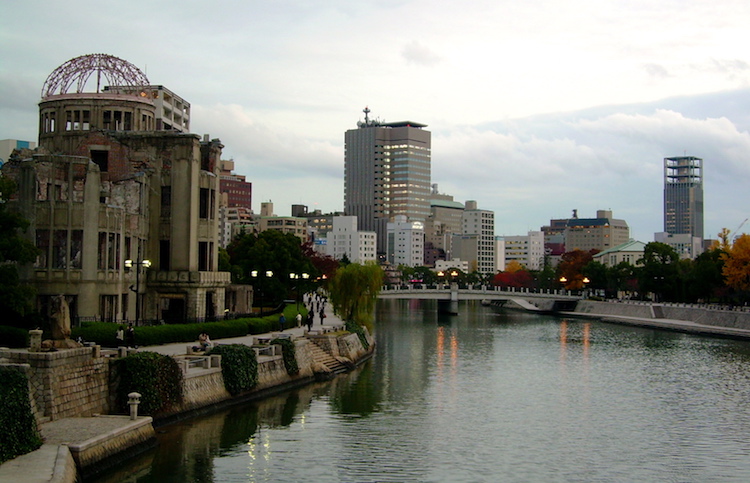By Jamshed Baruah
GENEVA (IDN) – “The lack of nuclear weapons use since Hiroshima and Nagasaki cannot on its own be interpreted as evidence that the likelihood of a detonation event is minimal,” warns the United Nations Institute for Disarmament Research (UNIDIR), an autonomous institute within the United Nations based in Geneva.
The Japanese cities of Hiroshima and Nagasaki, on which the United States dropped atomic bombs on August 6 and 9, 1945, embody the abhorrent humanitarian impact of nuclear weapons use, warning of the brutal consequences should such weapons of mass destruction be ever deployed again.
The fact that Hiroshima and Nagasaki have not been repeated yet does not remove the uncertainty that continues to plague existing understanding of nuclear weapon risks. “Variables include its critical role in deterrence doctrine as well as unknowns linked to the interaction of complex systems, the possibility of ‘beyond design-basis‘ events, and the impact of stockpile aging,” avers the report titled ‘Understanding Nuclear Weapon Risks’.
“Nuclear deterrence works – up until the time it will prove not to work,” argues the study edited by John Borrie, Tim Caughley and Wilfred Wan. “The risk is inherent and, when luck runs out, the results will be catastrophic. The arms races spawned by putting theory into practice create their own self-perpetuating dynamic. The more arms produced, particularly in countries with unstable societies, the more potential exists for terrorist acquisition and use of nuclear weapons.”
Nuclear deterrence has also created the paradox of the commitment trap, adds the report. “For example, to deter most of the threats that the United States and its allies may face in Northeast Asia, particularly from the DPRK (North Korea), nuclear use is neither entirely credible nor necessary.
“Yet any weakening of the United States’ nuclear umbrella could spur further adventurism by adversaries and proliferation by allies. Breaking out of the conundrum will require steady, collaborative and visionary leadership of a kind that is sadly rare today as major States increasingly turn inward.”
The UNIDIR study finds that “the substantial levels of investment in nuclear weapons and nuclear weapons systems and their modernization have enhanced rather than decreased the likelihood of an intentional or inadvertent detonation event.”
Other main findings of the report are:
– The secrecy associated with nuclear weapons programmes is an obstacle both for assessment and accountability pertaining to risk.
– Human judgment has been key in identifying and resolving past instances of false alarms. Greater reliance on automated systems can lead to misplaced confidence while introducing new points of vulnerability (“hidden interactions”).
– Technological advance suggests a declining need for terrorists or other groups to directly access an actual weapon in order to effect a nuclear detonation event.
– Risk is an inherent characteristic of nuclear weapons. The only way to eliminate risk completely is to eliminate nuclear weapons completely.
The study urges all States to: intensify their efforts to implement the existing global nuclear non-proliferation and disarmament regime; strengthen national safety, security, and safeguards culture, including through outreach with pertinent members of civil society such as academia and the private sector; and address tensions in the international security landscape through greater transparency, communication, and other confidence-building measures.
The authors suggest nuclear-armed States “refocus their efforts to exchange information on existing stockpiles and delivery systems, especially those deployed in foreign countries, to prevent misidentification that could prompt retaliatory attack.”
The study further calls for “action to extend decision timelines for policymakers in crisis situations, including reducing the alert status of nuclear-tipped missiles and migrating away from ‘launch on warning’ postures.”
The UNIDIR report asks nuclear-armed States to refrain from developing new nuclear delivery systems, such as air-launched cruise missiles, which would exacerbate ambiguity, eschew the use of rhetoric that normalizes the nuclear option or suggests the viability of limited nuclear war, and undertake a graded approach to cyber security that assesses the vulnerabilities in every layer of the nuclear weapons system complex.
They should also “ensure a level of independent oversight and control within their domestic nuclear weapons complex in order to prioritize safety considerations and thoroughly investigate operational uncertainties,” and “expand the nuclear security agenda to include the 83 per cent of fissile materials in non-civilian programmes.” [IDN-InDepthNews – 17 April 2017]
Photo: Atomic Bomb Dome by Jan Letzel and modern Hiroshima. Credit: Wikimedia Commons.
IDN is flagship agency of the International Press Syndicate.

